This article was medically reviewed by Annette Lee, MD. Dr. Lee is a Reproductive Endocrinologist and Medical Director at RADfertility in Newark, Delaware. She has over 17 years of experience with IVF and is double board certified in Obstetrics & Gynecology. She has received Castle Connolly’s Regional Top Doctor Award for five years and Vitals.com Patient Choice Award for five years as well. She completed her medical degree at the Drexel University School of Medicine.
There are 22 references cited in this article, which can be found at the bottom of the page.
wikiHow marks an article as reader-approved once it receives enough positive feedback. In this case, 89% of readers who voted found the article helpful, earning it our reader-approved status.
This article has been viewed 812,801 times.
Whether you’re trying to plan or prevent pregnancy, it can be helpful to know when you are ovulating. You are most fertile 12-24 hours after ovulation, which is when your body releases an egg cell that then moves into the fallopian tube. Luckily, there are a number of different ways you can track your ovulation to assist you with your family planning!
Steps
Monitoring Your Basal Body Temperature
-
1Buy a basal body temperature thermometer. Your basal body temperature is your lowest body temperature over a 24-hour period. In order to regularly take and monitor your basal body temperature (BBT), you’ll need a basal body temperature thermometer.[1]
- Basal body thermometers are available in most drugstores and come with a chart to help you track your BBT over several months.
-
2Take and record your basal body temperature every day for several months. To accurately track your BBT, you’ll need to take your temperature at the same time each day: immediately when you wake, before you even get out of bed.[2]
- Keep your BBT thermometer next to your bed. Try to wake up and take your temperature around the same time each morning.
- Basal body temperature can be taken either orally, rectally, or vaginally. Whichever way you choose to take your temperature, continue with that method to ensure a consistent reading each day. Rectal and vaginal readings may offer more accurate readings.
- Write down your temperature each morning on a piece of graph paper or a BBT chart, which is a pre-made graph on which you can plot your temperature.
- You’ll need to track your BBT every day for several months in order to begin seeing a pattern.
Advertisement -
3Look for a prolonged spike in temperature. Most women’s BBT raises about half a degree for a minimum of 3 days during ovulation.[3] Thus, you’re tracking your BBT in order to identify when this increase in temperature occurs for you each month, as it will allow you to then anticipate when you’ll ovulate.
-
4Try to anticipate ovulation. After several months of recording your BBT each morning, look over your charts to try to determine when you ovulate. Once you can identify a pattern of when your BBT rises each month, you’ll be able to anticipate when you’re ovulating by doing the following:[4]
- Find when your regular spike in temperature occurs each month.
- Mark the two to three days prior to this temperature spike as likely ovulation days.
- This record can also be helpful to show your doctor if you suspect possible infertility issues.[5]
-
5Understand the method’s limitations. Though your BBT can be a useful tool, it also has limitations you should be aware of.[6]
- You may not be able to identify a pattern. If you can’t identify a pattern after several months, you may need to use other methods in conjunction with monitoring your BBT. Consider adding one of the other methods discussed in this article to your routine.
- Basal body temperature can be disrupted by changes in your circadian rhythms, which can be brought on by working night shifts, over- or under-sleeping, traveling, or drinking alcohol.
- Basal body temperature can also be disrupted by periods of increased stress, including holidays or periods of illness, as well as by certain medications and gynecological conditions.
Checking Your Cervical Mucus
-
1Begin checking and testing your cervical mucus. Beginning immediately after your period ends, start checking your cervical mucus first thing in the morning.
- Wipe with a clean piece of toilet paper and examine any mucus you find by picking up a bit with your finger.
- Record the type and consistency of discharge or note the lack of discharge.
-
2Distinguish between the different kinds of cervical mucus. The female body produces several different types of cervical mucus each month as hormone levels fluctuate, and certain types of mucus are more conducive to pregnancy. Here's how vaginal discharge changes during the month:[7]
- During menstruation, your body will discharge menstrual blood, which consists of the shed uterine lining and unfertilized egg.
- During three to five days following menstruation, most women will have no discharge. Though not impossible, it’s highly unlikely that a woman will become pregnant during this stage.
- Following the dry period, you’ll begin to notice cloudy cervical mucus. This kind of cervical mucus forms a plug over the cervical canal that prevents bacteria from entering the uterus, and it’s also difficult for sperm to penetrate. A woman is unlikely to get pregnant during this period.[8]
- Following the stickier discharge, you’ll begin to see a white, beige, or yellow “creamy” discharge that’s similar in consistency to cream or lotion. During this stage a woman is more fertile, though not at peak fertility.
- You’ll then begin to notice thin, stretchy, watery mucus that resembles egg whites. It will be watery enough to be stretched several inches between your fingers. On or after the last day of this “egg white” cervical mucus stage, you’ll begin to ovulate. This “egg white” cervical mucus is very fertile and provides nourishment to sperm, making this the woman’s most fertile stage.
- Following this stage and ovulation, the discharge will return to its earlier cloudy, sticky consistency.
-
3Chart and record your cervical mucus over several months. It will take several months of monitoring before you’ll be able to distinguish a regular pattern.[9]
- Continue recording for several months. Examine your chart and try to distinguish a pattern. Right before the end of the “egg white” cervical mucus stage is when you’re ovulating.
- Tracking cervical mucus along with basal body temperature (BBT) can help you more accurately pinpoint when you’re ovulating by allowing you to corroborate the two records.[10]
Using Ovulation Predictor Kits
-
1Buy an Ovulation Predictor Kit (OPK), available at most drug stores. The OPK uses a urine test that measures luteinising hormone (LH) levels. The levels of LH in urine are usually low but will increase sharply for a 24-48 hour period just before ovulation.[11]
- OPKs can help you pinpoint when you ovulate more precisely than tracking your basal body temperature or cervical mucus, particularly if you have an irregular cycle.
-
2Pay attention to your menstrual cycle. Ovulation typically occurs about half-way into your menstrual cycle (about 12-14 days before your period on average).[12] You’ll know you’re a few days away from ovulation when you begin to see watery discharge resembling egg whites.
- When you begin to see this discharge, begin using the OPK. Because a kit will only contain a limited number of testing strips, it’s important that you wait until this point before beginning. Otherwise, you may go through all of the strips before you actually begin ovulating.
-
3Begin testing your urine each day. Follow the instructions provided with the kit. You should be careful to test your urine at the same time each day.[13]
- Avoid being either under- or over-hydrated, as it may artificially raise or lower LH levels.
-
4Know what your results mean. Many OPKs use a urine stick or strip to measure your LH levels and will indicate your results using colored lines.
- A line close to the color of the control line typically indicates elevated LH levels, meaning there’s a good chance you’re ovulating.
- A line lighter in color than the control line typically means you’re not yet ovulating.
- If you use OPKs several times without any positive results, consider seeing an infertility specialist for consultation to rule out infertility issues.
-
5Know the limitations of using an OPK. Though the test is usually accurate, you may miss your ovulation window if you don’t time the testing correctly.[14]
- For that reason, OPKs are best used in conjunction with another ovulation-tracking method, like tracking basal body temperature or cervical mucus, so you have a better sense of when to begin taking the urine tests.
Using the Symptothermal Method
-
1Track your basal body temperature (BBT). The symptothermal method uses a combination of tracking physical changes and BBT to determine when you ovulate.[15] Tracking your BBT is the “thermal” part of the symptothermal method, and it requires that you track your basal body temperature every day.
- Because your BBT will experience a sustained rise two to three days after ovulation, tracking your BBT can help you estimate when in your cycle you’re ovulating. (See the method on Using Basal Body Temperature for more detailed instructions.)
- It will take several months of daily tracking to establish a pattern of ovulation.
-
2Track your bodily symptoms. This is the “sympto” part of the symptothermal method and involves closely tracking your physical symptoms to determine when you’re ovulating.[16]
- Each day, carefully track and record your cervical mucus (see the section on Checking Your Cervical Mucus for more) and any other menstrual symptoms you experience, like breast tenderness, cramping, mood swings, etc.[17]
- Worksheets for tracking your symptoms are available online to print or you can devise your own.
- It will take several months of daily tracking to distinguish a pattern.
-
3Combine the data to determine ovulation. Use both the information from your BBT tracking and from your symptom tracking to verify when you ovulate.[18]
- Ideally, the data will coincide, allowing you to determine when you’re ovulating.
- If the data conflict, continue your daily tracking of each until a coinciding pattern appears.
-
4Know the limitations of the method. This method is best used for fertility awareness, and does have certain limitations.[19]
- Some couples use this method for natural contraception by avoiding sex during the woman’s fertile period (leading up to and during ovulation). Using this method for contraception, however, isn’t generally recommended, as it requires very careful, meticulous, and consistent record-keeping.
- Those who use this method for birth control still experience about a 10% chance of unplanned pregnancy.
- This method can also be problematic if you’re experiencing periods of high stress, travel, illness, or sleep disturbance, which will alter your body’s basal temperature, as will working nights or drinking alcohol.
Using the Calendar (or Rhythm) Method
-
1Learn your period cycle. This method uses the calendar to count days between cycles and anticipate when your fertile days will be.[20]
- Most women with regular periods have a 26-32 day cycle, though your cycle could be as short as 23 days, or as long as 35 days. A wide range of possible cycle-lengths are still normal. The first day is the beginning of one period; the last day is the beginning of the next period.
- Remember, though, that your period may vary slightly from month to month. You could be on a 28-day cycle for one or two months, and then shift slightly the next month. This is also normal.
-
2Chart your cycle for at least 8 cycles. Using a regular calendar, circle the first day of each cycle (the first day of your period).[21]
- Count the number of days between each cycle (include the first day when you count).
- Keep a running total of the number of days in each cycle. If you find that all of your cycles are shorter than 27 days, don’t use this method as it will give inaccurate results.
-
3Predict your first fertile day. Find the shortest cycle among all those you’ve tracked, and subtract 18 from that number of days.[22]
- Write down the resulting number.
- Then locate day one of your current cycle on the calendar.
- Starting at day one of your current cycle, use the number you wrote down to count forward that number of days. Mark the resulting day with an X.
- The day you’ve marked with an X is your first fertile day (not your ovulation day).
-
4Predict your last fertile day. Find the longest cycle among all those you’ve tracked, and subtract 11 from that number of days.[23]
- Write down the resulting number.
- Locate day one of your current cycle on the calendar.
- Starting at day one of your current cycle, use the number you wrote down to count forward that number of days. Mark the resulting day with an X.
- The day you marked with an X is your last fertile day and should be your day of ovulation.
-
5Know the limits of the method. This method requires careful and consistent record-keeping and can thus be prone to human error.[24]
- Because your monthly cycles may shift, it’s difficult to precisely time your ovulation with this method.
- This method is best used in conjunction with other ovulation-tracking methods for a more accurate result.
- This method will be quite difficult to use accurately if you experience irregular periods.
- This method can also be problematic if you’re experiencing periods of high stress, travel, illness, or sleep disturbance, which will alter your body’s basal temperature, as will working nights or drinking alcohol.
- Using this method for contraception requires very careful, meticulous, and consistent record-keeping in order to be successful. And even so, those who use this method for birth control still experience a 18% or higher chance of unplanned pregnancy. Thus, this method generally isn’t recommended as a form of birth control.
Sample Basal Body Temperature Charts
Warnings
- These methods are recommended for fertility awareness, not for birth control. Using them for birth control can result in an unplanned pregnancy.⧼thumbs_response⧽
- These methods will not protect you from sexually transmitted diseases or infections.⧼thumbs_response⧽
References
- ↑ https://health.clevelandclinic.org/can-tracking-your-basal-body-temperature-help-you-conceive/
- ↑ https://health.clevelandclinic.org/can-tracking-your-basal-body-temperature-help-you-conceive/
- ↑ https://myhealth.alberta.ca/Health/Pages/conditions.aspx?hwid=hw202058
- ↑ https://myhealth.alberta.ca/Health/Pages/conditions.aspx?hwid=hw202058
- ↑ http://www.babycenter.com/chart-basal-body-temperature-and-cervical-mucus
- ↑ https://www.plannedparenthood.org/learn/birth-control/fertility-awareness/whats-temperature-method-fams
- ↑ https://www.plannedparenthood.org/learn/birth-control/fertility-awareness/whats-cervical-mucus-method-fams
- ↑ https://www.med.unc.edu/timetoconceive/study-participant-resources/cervical-mucus-testing-information/
- ↑ https://www.med.unc.edu/timetoconceive/study-participant-resources/cervical-mucus-testing-information/
- ↑ http://www.plannedparenthood.org/learn/birth-control/fertility-awareness
- ↑ https://www.fda.gov/medical-devices/home-use-tests/ovulation-urine-test
- ↑ https://www.ncbi.nlm.nih.gov/pmc/articles/PMC5689497/
- ↑ https://medlineplus.gov/ency/article/007062.htm
- ↑ https://www.fda.gov/medical-devices/home-use-tests/ovulation-urine-test
- ↑ https://www.ncbi.nlm.nih.gov/pmc/articles/PMC5689497/
- ↑ https://www.nhs.uk/common-health-questions/womens-health/how-can-i-tell-when-i-am-ovulating/
- ↑ http://www.nichd.nih.gov/health/topics/menstruation/conditioninfo/Pages/symptoms.aspx
- ↑ https://www.acog.org/womens-health/faqs/fertility-awareness-based-methods-of-family-planning
- ↑ https://www.ncbi.nlm.nih.gov/books/NBK564316/
- ↑ https://www.acog.org/womens-health/faqs/fertility-awareness-based-methods-of-family-planning
- ↑ https://www.hopkinsmedicine.org/health/wellness-and-prevention/calculating-your-monthly-fertility-window
- ↑ https://www.msdmanuals.com/en-gb/home/women-s-health-issues/family-planning/fertility-awareness-methods-of-contraception
- ↑ https://www.msdmanuals.com/en-gb/home/women-s-health-issues/family-planning/fertility-awareness-methods-of-contraception
- ↑ https://www.hopkinsmedicine.org/health/wellness-and-prevention/calculating-your-monthly-fertility-window
- ↑ https://my.clevelandclinic.org/health/diseases/21698-anovulation
About This Article
To track ovulation using your basal body temperature (BBT), you will need to take your temperature each morning as soon as you wake up. Write down your temperature on a monthly BBT chart every day for several months, then compare the charts to look for a pattern. You should see a spike in your BBT of a half of a degree lasting for about 3 days around the same time each month. This is when you are ovulating. To learn how to track ovulation by checking your cervical mucus, keep reading!








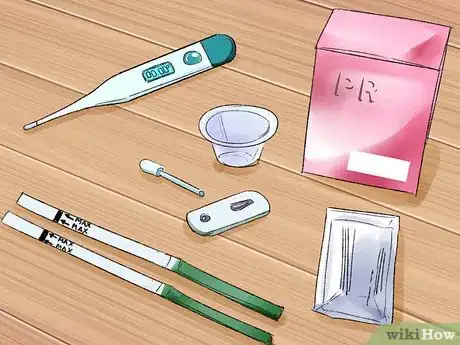










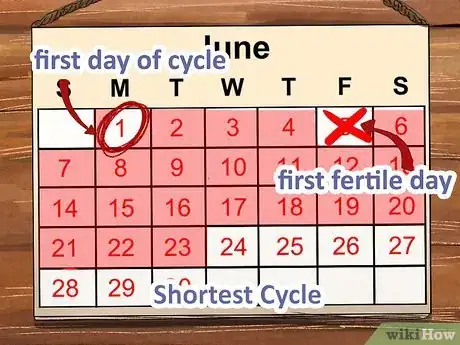


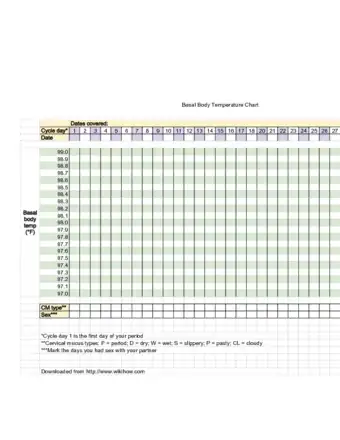
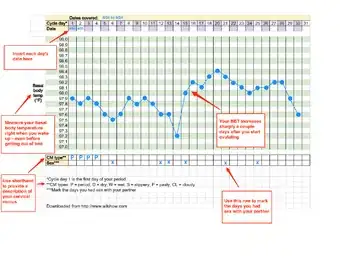






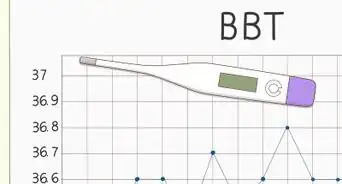























































Medical Disclaimer
The content of this article is not intended to be a substitute for professional medical advice, examination, diagnosis, or treatment. You should always contact your doctor or other qualified healthcare professional before starting, changing, or stopping any kind of health treatment.
Read More...